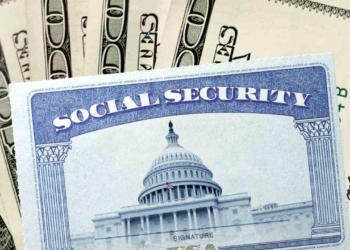Given the context of property taxes in New Jersey, which remain among the highest in the country, the ANCHOR program, an initiative managed by the state Treasury Department, is not exactly a federal “stimulus check” like those of the COVID era, but an annual rebate originating from the state budget.
Its design completely replaced the previous “Homestead Benefit”, growing to become one of the most extensive relief programs in New Jersey. Let’s take a closer look at this program that is distributing stimulus payments to millions of New Jersey residents.
ANCHOR Program 2025: Complete Guide for NJ Homeowners & Renters
The distribution of benefits, which amounts to billions of dollars annually, is based on a specific administrative cycle. Eligibility and amounts are calculated based on the household’s situation during 2024, while disbursements are made in the 2025 benefits cycle. This one-year time lag is a key structural element in the program’s logistics.
The ANCHOR program impacts an estimated 1.8 to 2 million households annually in the state, according to administration data. Its continuation is not guaranteed; rather, it depends on budget allocations approved by the governor and the state legislature each fiscal year.
ANCHOR Benefit 2025: Calculate Your Rebate Amount
Benefit amounts for the 2025 cycle vary depending on homeownership status, 2024 gross income, and the applicant’s age. For homeowners, those with incomes of $150,000 or less receive $1,500, while those with incomes between $150,001 and $250,000 receive $1,000. An additional $250 bonus is awarded to individuals aged 65 or older as of December 31, 2024.
For renters, the amounts are $700 for incomes up to $150,000 and $450 for incomes between $150,001 and $250,000. The $250 senior bonus is also applicable to this group if they meet the age requirement, although the benefit structure has specific caps. For landlords who qualify for the bonus, the maximum total amount reaches $1,750.
A specific condition for tenants stipulates that the rent paid must be subject to local property taxes. This general rule applies to most apartments, but may exclude housing under federal subsidy programs, such as Section 8, in certain circumstances. Eligibility is verified on a case-by-case basis during the application process.
ANCHOR Program for Renters: Eligibility Explained
The primary eligibility requirements stipulate that the applicant must be a legal resident of New Jersey and have occupied their primary residence as of October 1, 2024. Proof of property tax payments must be provided, either directly as the owner or indirectly through rent as a tenant. The designated residence cannot be a second home or an investment property.
The 2024 gross income limits are set at a maximum of $250,000 for homeowners and $150,000 for most renters, with some brackets extending up to $250,000. The program does not set a minimum age to participate, but people over 65 or those receiving SSDI disability benefits are subject to specialized rules and application forms.
Verification of residency and income is an important component in preventing fraud and ensuring that funds are distributed in accordance with the law. Applications that do not verifiably meet all criteria are rejected or placed on hold until the identified inconsistencies are corrected.
ANCHOR 2025 Payment Schedule: Distribution Waves
The schedule for the 2025 cycle included automatic applications for most SSDI beneficiaries under age 65 without disability, processed by the state in September 2025. For those not included in this automatic process, such as individuals age 65 and older, the deadline to apply was October 31, 2025, using the combined PAS-1 form.
Payments were scheduled to begin on September 15, 2025, and were distributed in waves. Most payments were issued within 90 days of application approval. Early or automatic applicants began receiving their funds in September or October, while applications submitted near the October deadline may receive their payments as late as November, December 2025, or even January 2026.
Payments are sent exclusively via direct deposit, for those who had previously set up this option, or by check through the mail. There is no prepaid debit card option, unlike other federal aid programs. As of November 23, 2025, a significant number of payments were still being distributed, particularly for applications submitted in October or those requiring additional verification.







